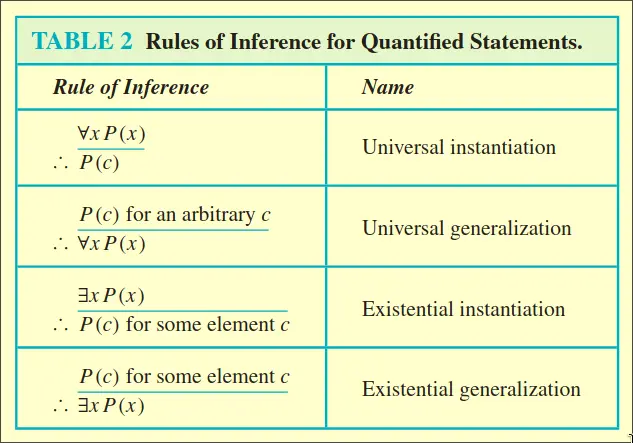Figures out what is true from something else. To show that two arguments are equivalent, we could use a Truth Table, but we could also use Deductive Reasoning.
If an argument is valid, if the conclusion if valid. using the rules of inference you can prove the statement is a Tautology.
Rules

Addition
If I have P is true, then i know that P OR whatever is true
Simplification
If both are true, then:
Modus Ponens
If P is true, and P implies Q, then you can conclude Q.
Modus Tollens
Derived from Contrapositive Statement
Hypothetical Syllogism
A statement proving a child statement, will prove that child’s child aswell.
Disjunctive Syllogism
P or Q is true. if one of the terms is false, then the other must be true
Conjunction
Self explanatory
Resolution
Rules for Quantified Statements
 If you instantiate a existence before a universal instantiation, then you cannot use the same instantiated existance variable before for the universal instantiation
If you instantiate a existence before a universal instantiation, then you cannot use the same instantiated existance variable before for the universal instantiation
Universal Instantiation
If we show that a function works for all numbers, then we can sub in an arbitrary number into the function
Universal Generalization
If an arbitrary number can be subbed into P(x), then P(x) work for all values of x. You must use a fresh new variable that did not appear in the argument/proof.
Existential Instantiation
If there exists an element c, then c cannot be arbitrary and there is one value c where P(c) is true
Existential Generalization
If there is a value c that allows P(c) to be true, then we know there exist a c to allow P(c) to be true.
Rules of Inference

Simple Induction
- P(b)
- Therefore,
Strong Induction
- Therefore,